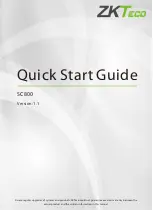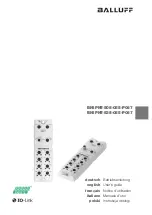
Rev 11.3/1-17
30
MRTALPR4-DC: #35057
V
ACUUM
T
EST
Test the vacuum system for leakage routinely, as directed in the preceding I
NSPECTION
and
T
ESTING
S
CHEDULES
.
1) Clean the face of each vacuum pad as previously directed (see V
ACUUM
P
AD
M
AINTENANCE
:
Cleaning).
2) Apply the lifter to a clean, smooth, nonporous surface. The surface should be flat or possess
no more curvature than the lifter is designed for (if any).
22
When the pumping cycle is
completed, the vacuum level should register above 16" Hg [-54 kPa] on each of the vacuum
gauges (if not, see V
ACUUM
S
WITCH
A
DJUSTMENT
to follow).
3) After the vacuum pump stops running, leave the pads attached to the surface and place the
lifter's power switch in the “off” position ( ), to interrupt the energy flow from the battery.
4) Monitor the vacuum gauges:
The vacuum level should not decrease by more than 4" Hg
[-14 kPa] in 10 minutes.
WARNING: If lifter fails vacuum test, discontinue use immediately.
Correct any deficiency in the vacuum system before using the lifter. Contact Wood’s Powr-Grip
or an authorized dealer for assistance.
R
EMOTE
C
ONTROL
S
YSTEM
T
EST
If the lifter is equipped with a Remote Control System, perform this test in the environment
where the lifter is normally employed. Use the radio transmitter to activate each of the remote
functions.
23
Vary the location and distance of the transmitter in relation to the lifter, to ensure
that transmissions are effective in a variety of circumstances. This may require assistance from
someone near the lifter, to verify that functions are being performed as intended.
If the Remote Control System does not function correctly, review the following potential causes
of malfunction and correct them as directed:
• The battery for the radio transmitter may be worn out. Replace any expended battery (see
REPLACEMENT PARTS LIST).
• Metal or other electrically conductive surfaces may be causing interference between the radio
transmitter and radio receiver. Although the transmission signals often can bounce around
interfering surfaces, the signals do not travel through conductive walls. Reposition the
transmitter as necessary to transmit signals effectively.
If the preceding directions do not resolve a performance problem, repeat the test under different
conditions, to determine whether there is transmission interference in the work environment or
the Remote Control System is not functioning as intended. Correct any deficiency before
resuming normal use of the Remote Control System. If necessary, contact Wood’s Powr-Grip or
an authorized dealer for assistance.
22
Any test material used must be fully and independently supported, and capable of bearing the lifter’s weight. Do not use
the lifter to lift the test material during the vacuum test.
23
Use a test material with appropriate surface characteristics (see INTENDED USE: L
OAD
C
HARACTERISTICS
) to test the apply and
release functions.















































